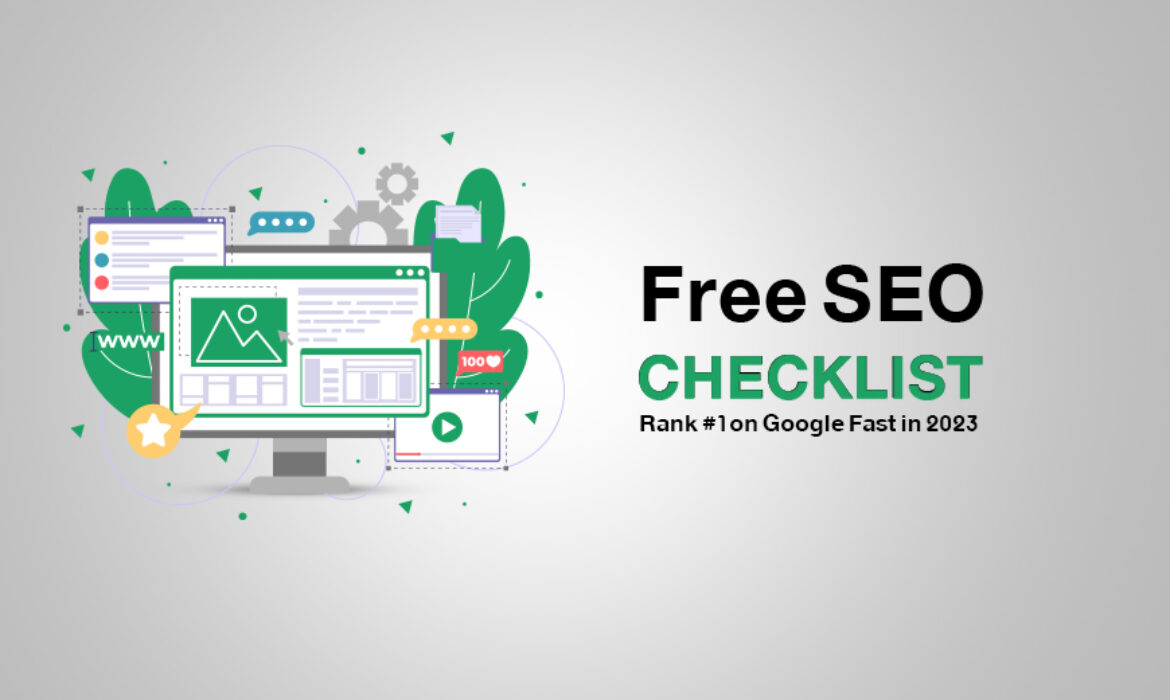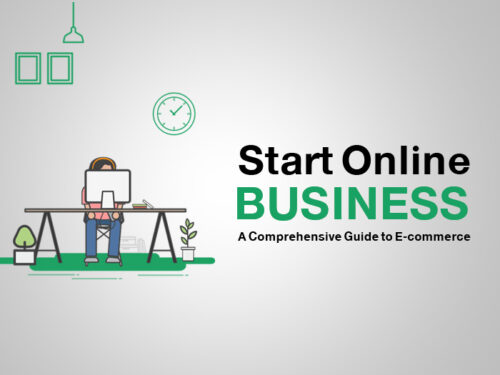Free SEO Checklist: Rank #1 on Google Fast in 2023
Discover the ultimate guide to SEO in 2023 and unlock the secrets to improving your website’s visibility and organic rankings. Our expert content creator and SEO specialist, with over 10 years of experience, will take you through the latest strategies and best practices that will propel your online presence to new heights. Get ready to optimize your website, boost organic traffic, and stay ahead of the competition in the ever-evolving world of search engine optimization.
What is SEO in digital marketing? SEO in digital marketing is a strategy and Free SEO Checklist that focuses on your website’s presence in the search results. It involves various techniques to help you improve your rankings.
Search engine optimization (SEO) is a critical component of your digital marketing strategy. It can help more members of your target audience discover your business online, so you can expand your reach and increase your revenue.
What is SEO in digital marketing?
SEO in digital marketing is a strategy that focuses on your website’s presence in search results on search engines like Google. It involves using various techniques to improve your website to help both search engines and consumers better understand your website.


How does SEO in digital marketing work?
Now that you know the answer to the question “what is SEO in digital marketing,” let’s go over how it works.
When you implement an SEO strategy, you optimize your website to show up in the search engine results pages (SERPs) for keywords and phrases related to your business. You’ll also submit your website URLs to Google (and other search engines) so they can show up in the SERPs
Search engines like to provide the best experience for their users, which is why they have hundreds of ranking factors that determine your spot in the SERPs. Search engines want to show users the best websites in the results to provide them with the information they need.
With SEO, you’ll implement techniques that improve your website’s user experience to ensure that your site gives your audience answers to their queries. A few examples of SEO techniques include:
- Implementing responsive design to make your website friendly for mobile users.
- Improving your website navigation to ensure users can easily navigate your site.
- Creating custom content that answers users’ questions.
- Inserting keywords and phrases throughout your site pages and content.
When you implement an SEO strategy, your improvements will send positive signals to search engines that your website provides value to users. As a result, search engines will rank your website higher in the SERPs.

How do search engines work?
Search engines are the backbone of the internet, enabling users to find the information they need with just a few clicks. But how do search engines actually work? Let’s take a closer look at the intricate processes involved.
- Crawling: Search engines employ software programs called crawlers or spiders to systematically explore the web. These crawlers start by visiting a few web pages and then follow the links on those pages to discover new ones. They continue this process, moving from one page to another until they have crawled a significant portion of the web. During the crawling process, the crawlers collect data about each page they encounter, including its content, structure, and links.
- Indexing: Once the crawlers gather data, search engines index the information to create a searchable database. The indexing process involves organizing the collected data and storing it in a way that allows for quick retrieval. The goal is to create an index that can be efficiently searched when users enter a query.
- Ranking: When a user performs a search, the search engine’s algorithm comes into play. The algorithm considers various factors to determine the relevance and quality of web pages in relation to the search query. These factors can include keyword usage, relevance of content, user engagement signals (such as click-through rates and time spent on page), site authority (measured by the quantity and quality of backlinks), and many other variables. The algorithm assigns a rank to each page based on these factors, with the most relevant and authoritative pages receiving higher rankings.
- Retrieval: After the ranking process, search engines retrieve the most relevant pages from their index to display on the search engine results page (SERP). The SERP typically includes a combination of organic results (unpaid) and paid advertisements. The search engine aims to present the most useful and relevant results to the user based on the search query.
It’s important to note that search engine algorithms are constantly evolving. Search engines strive to improve the accuracy and quality of their search results, which means the ranking factors and algorithms are subject to frequent updates. As a content creator and SEO specialist, staying up to date with these changes and adapting your strategies accordingly is crucial for maintaining and improving your website’s visibility in search engine rankings.
In summary, search engines work by crawling the web, indexing the collected data, ranking web pages based on relevance and quality, and retrieving the most relevant results for users’ search queries. Understanding these processes can help you optimize your website and content to improve your visibility in search engine results pages and drive organic traffic to your site.
What is the difference between organic search vs. paid search?
When it comes to understanding SEO in digital marketing, it’s essential to understand organic SEO and paid search, and how they differ.
The difference between organic search and paid search is organic search is free and paid search is paid.
When you submit a search to a search engine, the results display paid and organic listings — paid listings will have the word “Ad” attached to them. Click on a paid listing and the advertiser will pay for that click. Click on an organic listing and the website owner will pay nothing.
SEO is all about improving your rankings in organic search results.
While paid search is valuable and has its uses, organic search’s return on investment (ROI) makes SEO a smart investment for any business. That’s why it’s important to learn what SEO is and how SEO works because you can use that knowledge to improve your site’s search result rankings and traffic numbers.
How does SEO in digital marketing compare to SEM and PPC?
While exploring SEO strategies, you might come across the terms search engine marketing (SEM) and pay-per-click (PPC) advertising. If you’re wondering what these terms are and how they differ from SEO, we’ve got you covered.
SEO vs. SEM
Like we discussed above, SEO focuses on improving your website’s rankings in the organic search results. These are the results that display below the sponsored (paid) results.
SEM, on the other hand, is an umbrella term that focuses on improving your rankings in both the organic and paid results. As a result, if you implement an SEM strategy, you’ll find yourself launching ads that appear at the top and bottom of the search results.
SEO vs. PPC
PPC is a digital advertising strategy that involves launching ads on search engines like Google. It’s often referred to as paid search.
With PPC, you’ll bid on keywords and phrases that you want your website to appear for in the search engine results.
So, PPC focuses on the paid side of search engine marketing while SEO focuses on the organic (free) side.
What are the benefits of SEO in digital marketing?
SEO is an essential strategy that can help your business grow and reach new heights. Check out more benefits of SEO in digital marketing below:
- Boost online visibility: SEO helps you boost your online visibility and brand awareness. When you implement an SEO strategy for your business, your website will appear higher in the search results. That means more members of your target audience discover your business online.
- Increase website traffic: You can drive more traffic to your website when you increase your rankings in the SERPs. As a result, more users visit your website, read your content, and check out your products and services to increase sales and revenue for your business.
- Stand out from competitors: SEO enables you to outrank your biggest competitors in the search results. That means you can boost your credibility as an expert in your field to outshine your competitors and attract new customers.
SEO is a valuable strategy that enables you to acquire new customers and continuously promote your products and services online to drive more sales and revenue for your business.
What are the types of SEO in digital marketing?
Before you start implementing an SEO strategy for your company, it’s essential to first understand the different types of SEO, also known as the pillars of SEO.
Here are the four types of SEO in digital marketing:
1- On-page SEO
What is on-page SEO? On-page SEO refers to optimizations that take place directly on your website to improve your SEO. With on-page SEO, you focus on ensuring that your website is easy to use and provides value to users by answering their questions and giving them solutions to their queries.
Here are a few elements you can focus on optimizing with on-page SEO:
Keywords
- URLs
- Title tags
- Header tags
- Meta descriptions
- On-page SEO enables you to improve your website to help users and search engines better understand your website. For example, by optimizing your titles, you can inform search engines and users about your page’s topic. As a result, you can increase your rankings and encourage users to click on your site.
2- Off-page SEO
Off-page SEO refers to optimizations that take place outside of your website. With off-page SEO, you focus on your website’s authority. While your website or domain authority isn’t an official Google ranking factor, it can help boost your rankings by creating a site with valuable content that people and websites link back to.
This process can involve earning links from other websites, shares on social media platforms, and other mentions of your website across the Internet. Off-page SEO can include:
- Creating accurate, valuable, and high-quality content
- Sharing your content on social media
- Connecting with influencers
- Reaching out to other websites to host something that you’ve written
- Your authority can determine whether search engines and users view your business as an expert in your field. And a high authority will help your online reputation and search rankings blossom.
Technical SEO
Technical SEO refers to optimizations that make your website easy for search engine crawlers and users to use and understand. Search engine crawlers index pages and websites for search engines. In other words, search engine crawlers help search engines store your page and website data to use for future searches.
With technical SEO, you focus on optimizing the back end of your website, such as your:
- Page load speed
- Mobile-friendliness
- Navigation
Your page design, navigation, and loading speed impact how easily your audience and crawlers can use and understand your website. When your website loads quickly and ensures that users can easily find the information they need, you can help your site rank higher in the SERPs.
Content
The last type of SEO is content. Content is the bread and butter of your website. It gives users and search engines essential information about your business, such as what you do and what types of products and services you offer.
Creating content also enables you to insert high-value keywords throughout your site to increase your opportunities to rank higher in the search results.
There are several types of content you can create for your business, including:
- Blog posts
- Informative articles
- Detailed guides
- Videos
- Infographics
Your content works hand-in-hand with your SEO strategy to promote your products and services to more users online so you can drive more sales and revenue for your business.
Free SEO Checklist
It is a checklist where you complete all tasks to optimize your site for search engines from a technical perspective. Technical SEO is all about:
- Understand how search engines see your website.
- Research all the factors they use to rank your site.
- Make changes to improve your site’s visibility.
- Choose the right keywords
- Build credibility with your clients
Enable Secure Sockets Layer (SSL) on your website
SSL is a security protocol that creates an encrypted link between a web server and a web browser. It keeps Internet connections secure and prevents criminals from reading or modifying information transferred between two systems. When you see a padlock icon next to a URL in the address bar, the website you’re visiting is SSL protected. This is done by logging into your WordPress site and then going to the plugins directory. Next, find the “Really Simple SSL” download, and activate it.
You should only have one copy of your website domain
Websites usually have more than one version, for example, if you have two versions of the same website, both versions will be treated as different websites by search engines like Google.
Configure the permalink correctly
Permalink formation is very important for technical SEO. Permalinks mainly affect the on-page ranking factors of your website.
Improperly configured permalinks can cause duplicate content issues as well, which will eventually lead to lower search engine rankings for your site.
To configure the permalink on your WordPress blog or website.
Go to Settings in the WordPress dashboard
- Jump on Permalinks
- Choose the post name option
Doing this is easy on a WordPress site. All you need is to go to Permalinks in Settings and select Post Name from the Permalinks options.
Google Analytics analysis
Adding your site to Google Analytics is not part of the technical SEO checklist, of course. But doing so will help you monitor your site traffic, page views, and traffic sources.
Index your website in search engines (Yandex, Google, Bing)
Robots called crawlers to come to your site and then index it in search engines. So indexing your site on search engines is not within your reach, of course. But what you can do is make it easier for search engines like Google to be crawled and then indexed.
Make sure your site is mobile-friendly (Technical SEO Checklist)
Today, more people use mobile devices than ever before. So if your website isn’t mobile-friendly, you’ve already lost significant traffic from users accessing websites on their phones or tablets.
Social media sharing buttons added
Again, a technical SEO checklist is not necessary! But adding social media sharing buttons to your website will help you increase social mentions as well as user engagement.
Conclusions :
Congratulations! You’ve reached the end of our complete guide to SEO in 2023 and Full SEO Checklist. By now, you should have a solid understanding of the key principles, strategies, and best practices to optimize your website and improve its visibility in search engine results.
You can check our SEO Services for your business: here
Remember, SEO is not a one-time task but an ongoing process. As search engines evolve and algorithms change, it’s essential to stay updated with the latest trends and adapt your SEO strategies accordingly. Continuously monitor your website’s performance, analyze data, and make informed decisions to enhance your online presence.
Here are a few key takeaways to keep in mind as you embark on your SEO journey:
1. Content is King: High-quality, relevant, and valuable content is the foundation of a successful SEO strategy. Focus on creating engaging, informative, and shareable content that resonates with your target audience.
2. Keywords Still Matter: While search engines have become smarter, keywords remain an important element of SEO. Conduct thorough keyword research and incorporate them strategically throughout your website, ensuring a natural and organic flow.
3. User Experience Matters: Search engines value websites that provide a positive user experience. Ensure your site is mobile-friendly, loads quickly, and has intuitive navigation to enhance user satisfaction.
4. Build Quality Backlinks: Backlinks from reputable and relevant websites are like votes of confidence for search engines. Focus on building high-quality backlinks through content promotion, guest posting, influencer outreach, and collaborations.
5. Stay Social: Social media platforms play a significant role in SEO. Engage with your audience, share your content, and encourage social sharing to increase your online visibility and drive more traffic to your website.
6. Monitor and Analyze: Regularly monitor your website’s performance using analytical tools. Pay attention to metrics such as organic traffic, keyword rankings, conversion rates, and bounce rates. This data will guide your optimization efforts and help identify areas for improvement.
By implementing these strategies and staying up to date with the latest SEO trends, you’re well on your way to achieving higher search engine rankings, increased organic traffic, and improved online visibility for your website.
You can also check this from Google: This Guide for beginner
Remember, SEO is a dynamic field that requires continuous learning and adaptation. Stay curious, explore new techniques, and refine your strategies to stay ahead of the competition. Embrace the exciting world of SEO, and let your website thrive in the digital landscape.
Wishing you success on your SEO journey in 2023 and beyond!





